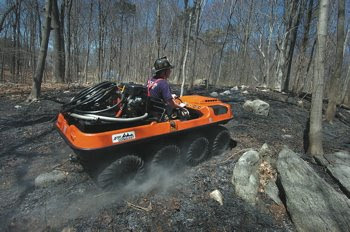The Connecticut Department of Energy and Environmental Protection and Middlesex Community College have recently completed a new training video designed to assist local fire departments when training their personnel in the construction of handline, or fireline. The 10-minute video is titled “Handline Construction for Forest Fire Control”.
It is geared toward fireline construction in eastern vegetation, but the principles apply in other areas as well. It was funded by the U.S. Forest Service with the understanding that it could be used in other states.
The film is skillfully written and produced and should be helpful when training new firefighters.
In one section the narrator mentions that when initial attacking a fire you should walk around it to size it up, but wisely adds, “If the fire is rapidly moving, don’t go around the head.”
The video is unique in that it shows firefighters working adjacent to an actual fire, which may be a prescribed fire, but it has flames, nonetheless.
A very long time ago I and several other firefighters on the Cleveland National Forest demonstrated in a training film the use of hand tools to construct fireline in southern California brush. It was titled “Hand Tools for Wildfire” and has no doubt disappeared from shelves in training rooms, thankfully. My role in the film was to demonstrate a “golf swing” while using a brush hook, a technique in which you swing the hook like golf club and impact the target on the way up, after you would have hit the golf ball…if you were using a brush hook to play golf. Most firefighters today probably don’t know what a brush hook is. Even back then hooks were being replaced by chain saws. When I ran a saw on the El Cariso Hothshots, it was a Homelite Super XL.




